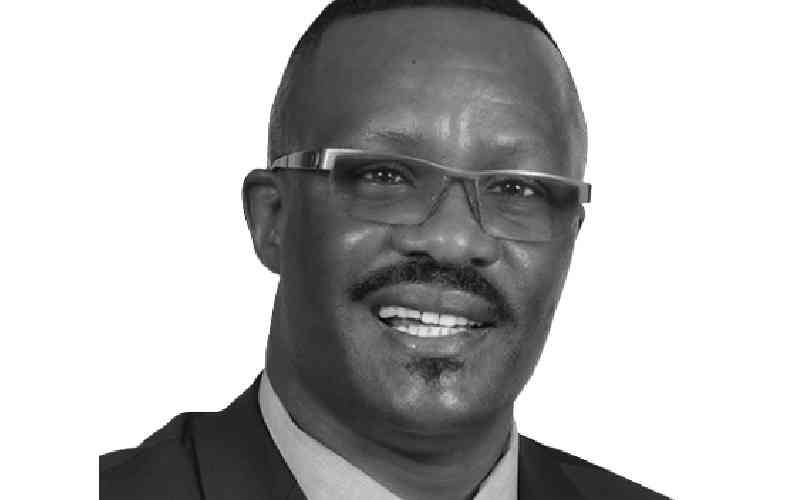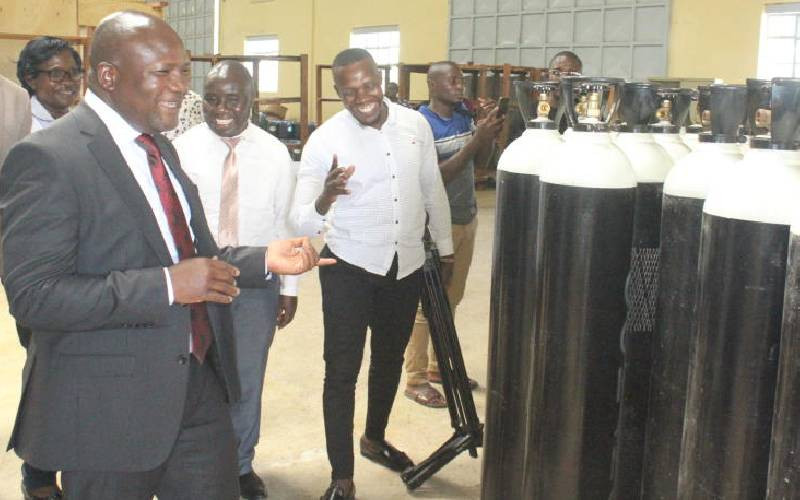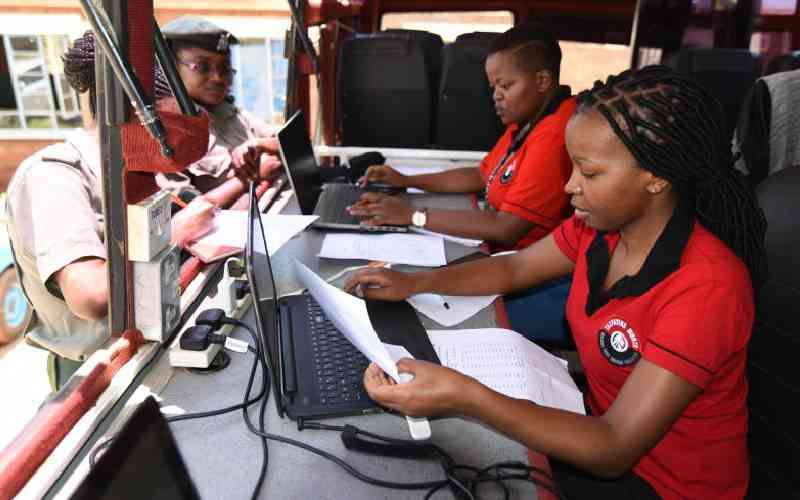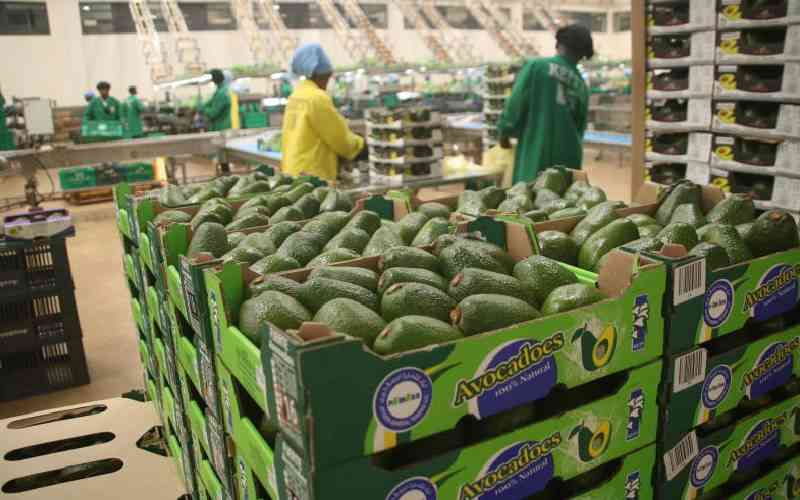
Upon his election in 2022, President William Ruto committed to transformative leadership through the Bottom-Up Economic Transformation Agenda (BETA), focusing on five key pillars: Agriculture; Micro, Small and Medium Enterprise (MSME) Economy; Affordable Housing; Universal Health Coverage; and the Digital Superhighway and Creative Economy. These sectors were identified to address deep-rooted economic marginalization and uplift those at the base of the economic pyramid. This, at a time when the foremost priority of most Kenyans was and remains bringing down the high cost of living.
Considering that food prices account for up to 54% of household expenditures, the government prioritized agricultural reforms to reduce high food production input costs since they are a major contributor to low yields and high food costs in Kenya. A key initiative was the fertilizer subsidy implemented by the government, which lowered fertilizer prices by 58%, from Sh6,000 in 2022 to Sh2,500 in 2024, saving farmers Sh3,500 per bag. The Government also increased fertilizer distribution to farmers by 514 per cent, from 1.4 million bags in 2022 to 8.6 million in 2024, providing an additional 7.2 million bags to boost food production.
These reforms significantly boosted maize production, which rose by 38.9 per cent from 61.74 million 50kg’ bags in 2022 to 85.7 million in 2023. Apart from increased earnings for farmers and other players in the agriculture value chain and creating thousands of new jobs, these interventions have not only increased Kenya’s food security but also led to a 33.7 per cent reduction in maize imports, saving valuable foreign exchange. Most notably, the price of a 2kg packet of maize flour dropped by 23.3 per cent, from an average of Sh169.9 in 2022 to an average, of Sh130.38 in 2024 thereby fulfilling a key promise the President made to Kenyans. The government has also expanded reforms across key value chains, including tea, coffee, dairy, edible oils, leather, cotton, and rice, boosting productivity, creating jobs, lowering costs, and increasing farmers' incomes.
One of the overarching objectives of the Kenya Kwanza Government has been to create jobs for the youth. Recognizing that the MSME sector employs approximately 85% of Kenya’s workforce, the government prioritized strengthening this sector to drive job creation, alleviate poverty, and support economic transformation. The aim is to empower MSMEs to absorb the growing number of young Kenyans entering the workforce each year and increase operational surpluses for workers. To achieve this, the government committed to ending the criminalization of informal work, improving access to finance and enhancing infrastructure and capacity-building.
Between 2022 and 2024, significant progress has been made in the MSME sector. Key achievements include the launch of the Hustler Fund in 2022, which provides affordable credit to MSMEs, organized groups and individual Kenyans, especially those at the lower end of the economic pyramid. To date, the fund has disbursed Sh54.9 billion to 22 million individuals and an additional Sh185.8 million to 673,340 groups and MSMEs.
Other notable interventions include refurbishing and equipping 21 Constituency Industrial Development Centers (CIDCs) to support key value chains such as leather, textiles, dairy, edible oils, and construction. These centers provide small-scale and Jua Kali manufacturers with access to shared production equipment and affordable workspace. Additionally, the government is constructing 19 County Aggregation Industrial Parks (CAIPs) to enable small-scale farmers to benefit from economies of scale in purchasing and selling agricultural produce. These parks, strategically located near production areas in each county, serve farmers and producers by offering facilities for collection, storage, sorting, and value addition for both local and export markets.
The requirement for new urban housing in Kenya is estimated at 250,000 units per year, against a production of 50,000 units, translating to a deficit of 200,000 units. The cumulative deficit is estimated at two million units. As a result, more than 60 per cent of urban Kenyans are living in slums and other low-quality housing without adequate sanitation, undermining their dignity and thereby exposing them to health hazards. To correct this anomaly, the government committed to building 200,000 affordable housing units annually, aiming to provide homes for those at the lower end of the economic pyramid while creating quality jobs for the youth. The government also pledged to expand mortgage access, strengthen the Jua Kali sector, and offer incentives to developers to accelerate affordable housing development.
Key achievements in the Affordable Housing Pillar between 2022 and 2024 have been impressive. During this period there has been a 1,061% increase in affordable housing units either already completed and launched or under construction in 40 counties surging from 8,872 in 2022 to 103,00 in 2024, with Nairobi leading with 33,810 units. Plans are underway to extend this initiative to all 47 counties. The total number of jobs created in the affordable housing project has also increased from 17,774 in 2022 to 140,610 in 2024, an increase of 188,256 jobs. This growth has provided much-needed employment opportunities, particularly for young people. Other beneficial outcomes from the affordable housing project has also included a 40% increase in mortgage refinancing and provision of various incentives for affordable housing developers.
The Constitution of Kenya (2010) enshrines the right to health under Article 43(1)(a), guaranteeing every individual the highest attainable standard of health, including essential healthcare services such as reproductive health. To fulfil this constitutional mandate, the Kenya Kwanza government has pursued a comprehensive strategy to achieve 100% universal healthcare, ensuring all Kenyans have access to affordable and high-quality healthcare. This strategy involves reforms in health financing, improving the availability of essential supplies, automating healthcare services, enhancing community health, and expanding healthcare infrastructure.
As part of its Universal Health Coverage (UHC) initiative, the government established the Social Health Authority (SHA) to manage key components such as the Social Health Insurance Fund (SHIF), accessible to all contributing members, the Primary Health Care Fund for SHA-registered members, and emergency coverage for chronic and critical illnesses available to all Kenyans. This emergency coverage provides critical care even after primary healthcare benefits are exhausted. These funds will increase the accessibility and affordability of quality healthcare to all Kenyans. The government also enacted the Social Health Insurance Act, Primary Health Insurance Act, and Facility Improvement Act in 2023, providing the legal framework needed for SHA's operations.
To improve the supply of medicines and medical equipment to Kenyans, the government has increased the supply fill rate of the Kenya Medical Supplies Authority (KEMSA) by 3% from 59% in 2022 to 62% in 2024. This improvement has been made possible by a Sh500 million recapitalization of KEMSA disbursed towards increasing drugs and health products. The government has also undertaken expansion of KEMSAs infrastructure, including the operationalization of the Kisumu Regional Distribution Centre, the soon-to-be-commissioned Embakasi Supply Chain Distribution Centre, and ongoing renovations at the Mombasa Regional Distribution Centre.
The government has also invested heavily in expanding the medical workforce to ensure the delivery of quality healthcare. Between 2022 and 2024, the number of Kenya Medical Training College (KMTC) graduates increased by 43%, from 15,915 to 22,695. The number of registered nurses rose by 38%, from 76,411 to 105,100, while the number of clinical officers grew by 60%, from 17,193 to 27,548. Additionally, the number of trained Community Health Promoters (CHPs) increased by 20% from 89,000 to 107,000. The number of CHPs receiving the Sh2,500 monthly stipend also saw a dramatic increase from 29,000 in 2022 to 107,000 in 2024, a 269% increase. To facilitate more effective delivery of healthcare services at the grassroots by the CHPs the government also increased the number of kits provided to them by 99,000 from 1,000 in 2022 to 100,000 kits in 2024.
In terms of healthcare infrastructure, between 2022 to date, the government has made notable strides by constructing four new level-four hospitals in Naro Moru, Ugenya, Keroka, Endebes, Kibugwa, and Lusigetti, and establishing two new level-five and level-six hospitals. Establishment of specialized facilities, including Mother and Baby Units at the Iten County Referral Hospital and Keroka Level 4 Hospital, the Nyabondo Trauma Center, a surgical ward at Busia County Referral Hospital, and the Kisii Cancer Centre, are at various stages of completion and operationalization. The Government has also increased the number of KMTC campuses by 19 per cent, from 71 in 2022 to 85 in 2024, enhancing the country’s capacity for medical training.
The ICT sector has emerged as a leading driver of global economic growth, playing a crucial role in fostering inclusive development across Africa. In Kenya, the sector achieved a notable growth rate of 10% in 2022, up from 6.1% in 2021. This growth aligns with the goals of Kenya Vision 2030, which seeks to position Kenya as a globally competitive and knowledge-based economy. The Kenya Kwanza Government has leveraged the Digital Superhighway to drive business growth, create jobs, and enhance revenue collection while supporting the other four BETA Pillars.
Key initiatives under the Digital Superhighway and Creative Economy pillar include ensuring universal broadband availability through the installation of optical fiber and JiConnect Hotspots, establishing a regional hub, and promoting software development for export. The government has also focused on improving service delivery through digital means by integrating government services into the eCitizen platform.
Significant progress has been made in expanding Kenya's digital infrastructure and creating job opportunities since 2022. Fiber optic cable installation has surged by 111%, with an additional 9,867 kilometers added, increasing the total from 8,900 kilometers in 2022 to 18,767 kilometers in 2024. Additionally, 1,490 Wi-Fi hotspots have been deployed nationwide to enhance internet connectivity and support e-commerce.
The establishment of 274 digital hubs, equipped with 16,804 digital devices, has improved technology access mostly in underserved communities. Youth employment has experienced remarkable growth through the Ajira and Jitume Digital Jobs Programs, with job opportunities increasing by 409%. Employment figures in these programs rose from 30,000 in 2022 to 152,711 in 2024, marking a 122,711 job increase. Training in digital literacy has also seen a significant rise, with a 598% increase in the number of youths trained, from 73,948 in 2022 to 516,505 in 2024, thereby enhancing their prospects in the digital economy.
One of the most remarkable achievements has been in enhancing the delivery of government services to citizens through the e-citizen platform. The digitalization of government services on the platform has expanded by 5,859 per cent with services growing from 350 services in 2022 to 20,855 in 2024. This expansion has contributed to a 652 per cent increase in revenue collection from digital services, with monthly revenue rising from Sh1.45 billion in 2022 to Sh10.9 billion in 2024, an increase of Sh7.45 billion per month. These achievements underscore the government’s commitment to advancing Kenya’s digital infrastructure, fostering youth employment, and improving access to essential services through technological innovation.
Friday 13th September 2024 marks the second anniversary of the Kenya Kwanza Government’s term in office. This represents the completion of 40 per cent of President William Ruto’s first 5-year term in office with 60 per cent yet to go. Whereas a lot of work remains to be done, significant progress has been made towards fulfilling our Manifesto promises especially on our five pillars of the PLAN. Despite a myriad of global and domestic economic challenges, on most metrics, indicators show that we have either outpaced our targets or are on course to meet them. I’m confident that under the tutelage of H.E. the President Dr. William Samoei Ruto CGH, and with a renewed and re-energized government focus on delivery and performance, our contract with the people of Kenya shall aptly be fulfilled with clinical precision.
The writer is the Deputy Chief of Staff, Performance and Delivery Management, Executive Office of The President
 The Standard Group Plc is a multi-media organization with investments in media
platforms spanning newspaper print operations, television, radio broadcasting,
digital and online services. The Standard Group is recognized as a leading
multi-media house in Kenya with a key influence in matters of national and
international interest.
The Standard Group Plc is a multi-media organization with investments in media
platforms spanning newspaper print operations, television, radio broadcasting,
digital and online services. The Standard Group is recognized as a leading
multi-media house in Kenya with a key influence in matters of national and
international interest.
 The Standard Group Plc is a multi-media organization with investments in media
platforms spanning newspaper print operations, television, radio broadcasting,
digital and online services. The Standard Group is recognized as a leading
multi-media house in Kenya with a key influence in matters of national and
international interest.
The Standard Group Plc is a multi-media organization with investments in media
platforms spanning newspaper print operations, television, radio broadcasting,
digital and online services. The Standard Group is recognized as a leading
multi-media house in Kenya with a key influence in matters of national and
international interest.











